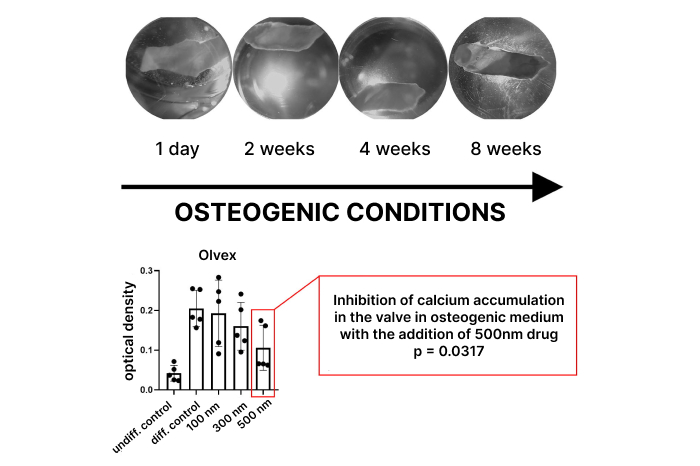
Aortic stenosis is a disease of the cardiovascular system characterized by narrowing of the left ventricular outflow in the aortic valve area. The most common cause of this pathology is a long-term degenerative-dystrophic process resulted in calcium salts deposition on valves and leading to elasticity and functional disruption.
Specialists of the Research Group for Molecular Mechanisms of Pathological Calcification of the World- Class Research Centre for Personalized Medicine have invented the technology for culturing human valves ex vivo to test drugs inhibiting the calcification process.
This method allows studying the drugs effect while maintaining the integrity of the valve tissues and discover the interactions of cell populations (including non-dividing ones) and the influence of intercellular matrix. For the study, the WCRC researchers use valve leaflets from patients with severe calcific aortic stenosis after valve replacement surgeries.
The principle of the model is to place valve fragments in an osteogenic environment with various dosages of the tested drug, and to assess calcium accumulation using spectrophotometry.
Such experiments allows introducing new approaches for testing drugs against excessive calcification in vivo conditions.
